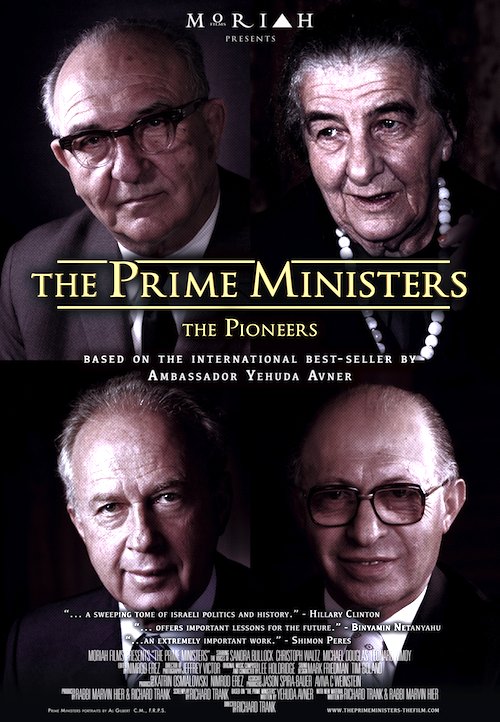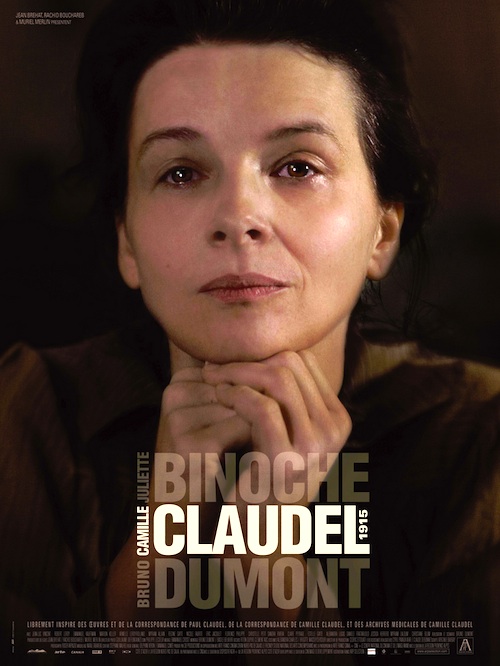By Joe Bendel. It is not sufficient to merely declare yourself a would-be state. Any governing authority must establish the rule of law. This was never a problem for the State of Israel (its neighbors are a different story). It started at the top, with Prime Ministers who guided the fledgling nation through periods of profound crisis. Ambassador Yehuda Avner witnessed this tumultuous history first hand as a trusted aide to Prime Ministers Levi Eshkol, Golda Meir, Yitzhak Rabin, Menachem Begin, and Shimon Peres. Drawing upon Avner’s insider history, Richard Trank chronicles the Eshkol and Meir years in The Prime Ministers: The Pioneers, which opens this Friday in New York.
Given the wit and verve Avner shows during his interview segments, viewers might assume he was in grade school when he served as Eshkol’s speech writer and English correspondent. However, he was there, in the field, when the State of Israel was first declared. Becoming a young but trusted member of Eshkol’s inner circle, Avner was on-hand for the planning sessions during the Six Days War. Begin was also present, forcefully advocating that Israel take advantage of the crisis to liberate the Old City of Jerusalem. Although cautious, Eshkol recognized the historic opportunity presenting itself and acted decisively.
 Where the Six Days War was an unqualified triumph for the Israeli military, the Yom Kippur War initially threatened the very existence of Israel. Yet, Golda Meir rallied the country. In desperate need of military aid, she turned to the Watergate-embroiled Richard Nixon, who authorized a massive emergency airlift. The Western European parties in the Socialist International were not so responsive, refusing to allow the American transports to refuel en-route to their embattled fellow member state. Fortunately, Israel survived, allowing Meir to publicly shame her socialist colleagues.
Where the Six Days War was an unqualified triumph for the Israeli military, the Yom Kippur War initially threatened the very existence of Israel. Yet, Golda Meir rallied the country. In desperate need of military aid, she turned to the Watergate-embroiled Richard Nixon, who authorized a massive emergency airlift. The Western European parties in the Socialist International were not so responsive, refusing to allow the American transports to refuel en-route to their embattled fellow member state. Fortunately, Israel survived, allowing Meir to publicly shame her socialist colleagues.
As the first of a two part documentary series (co-produced by Trank and Rabbi Marvin Heir), Pioneers focuses on Eshkol and Meir, but Begin and Rabin appear in brief but significant supporting roles. Considering Gravity’s continuing box-office dominance, a new Sandra Bullock movie ought to be major news, but her voice-over work as Meir is probably not likely to get the attention it deserves. Regardless, she well captures the Prime Minister’s humanity and resoluteness.
Likewise, it is great to at least hear Leonard Nimoy again, vividly bringing Eshkol’s words to life. Christoph Waltz, who narrated the writings of Theodor Herzl in Trank’s valuable It is No Dream, also nicely gives voice to Begin. Frankly, Pioneers is quite a big name production, with Michael Douglas rounding out the voice cast as Rabin and Emmy winning composer Lee Holdridge penning and conducting the score.
As a subsidiary of the Simon Wiesenthal Center, Moriah Films is a film production company parents and teachers can trust to portray history accurately. Like their previous productions, Pioneers is authoritative yet acutely aware of the human element underlying great geo-political events. One hopes Pioneers and Trank’s promised follow-up will eventually be widely available for high school and college viewing, because it provides the sort of comprehensive history of Israel students deserve, but are not getting from today’s media or academia. Yet, thanks to Trank’s brisk pacing and Avner’s engaging personality, Pioneers is never a dry or distancing viewing experience. Highly recommended for anyone fascinated by the great leaders of the Twentieth Century, The Prime Ministers: the Pioneers opens this Friday (10/18) in New York at the Quad Cinema.
LFM GRADE: B+
Posted on October 14th, 2013 at 2:14pm.


